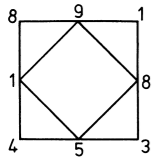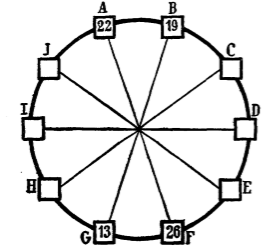Home » Four Number Sense Puzzles
Number Sense Puzzles
While many teachers and students are not in schools engaging in face-to-face learning, many teachers are getting creative in ways to engage their students in mathematics. Whether it is using Google Slides to make a puzzle accessible to classmates as they play against one another in real time, Desmos activities that bring activities to life or leaving math puzzles and tasks along neighbourhood streets and sidewalks. Everyone is finding ways to have people engage in a little more math these days.
When I began searching for pencil and paper games for my grade 3 class, I also stumbled across some great math puzzles that can be played individually or solve as a group. These puzzles could easily be left in neighbourhoods on sidewalks or street poles to engage people in a little math on their daily walks. I have decided to share with you the following four puzzles that I found would engage my students and neighbours in fantastic problem solving.
In the book Math Puzzles and Games by Michael Holt I came across the following two puzzles:
1. Take-away number squares
Begin with four numbers, one number at each corner of the square.

Draw a square around the previous one and make sure you go though the corners. At each corner of the larger square put the difference of the numbers at the next-door-corner of the small square.

Repeat this process until you come to a pattern of four numbers that does not change.
What is the pattern? What happens when you start with four different numbers?
2. a magic honeycomb
Using the numbers 1 through 19, make each bee cell row add up to 38.

The following two puzzles came from the book Math Tricks, Brain Twisters and Puzzles by Joseph Degrazia.
3. Squares Around a Triangle
Arrange numbers 1 – 9 along the sides and corners of an equilateral triangle so that the sums of the squares of the four numbers along each side of the triangle are equal.

4. the ten-spoke wheel
Fill in the remaining boxes with other numbers in such a way that the sum of the squares of two adjacent numbers equals the sum of the squares of the two opposite numbers.
For example. 222 + 192 = 132 + 262

If you look up #sidewalkmath you will find other great puzzles, games and number sense problems to share with your students and neighbourhood.
Traci Jackson has compiled math problems and tasks that she has left on the sidewalk for people to stumble upon on their walks as they engage in more math. Check out her collection here.
Facebook
Twitter
